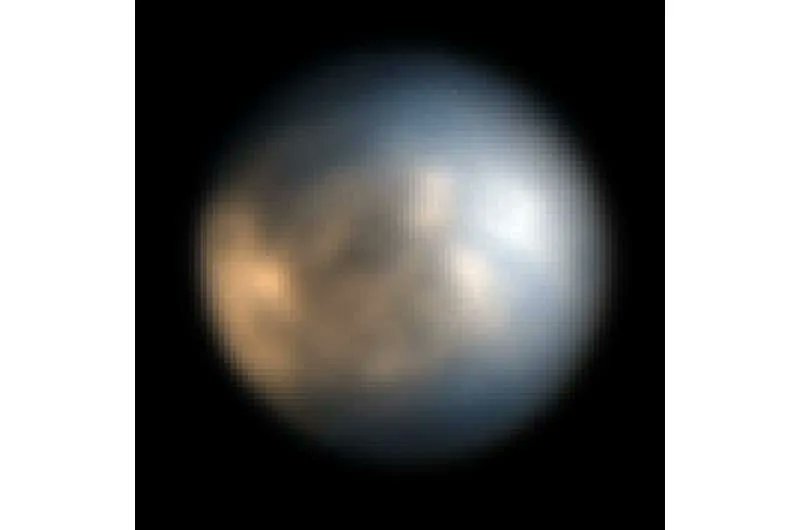Scouting mission locations in the outer solar system is complicated. It is difficult to know what you find before you get there with a probe, and once you’re already there, changing trajectories to look at the most exciting parts of the system is difficult. A much better option would be to map out the system in detail before the probe arrives.
That is precisely what a team at the University of Leicester is doing in the expectation of the arrival of the JUICE and Europa Clipper probes to the Jupiter system. To do so, they utilized one of the most powerful telescopes in the world. The Very Large Telescope, located in Chile, turned toward Europa and Ganymede, two Galilean moons in the Jupiter system that JUICE & Europa Clipper hope to visit.
VLT partially operates in the infrared, allowing Ph. D. student Oliver King to snap images of the two moons and subject them to a form of spectroscopy.
Comparing data collected by VLT to spectrographs of known materials on Earth would allow an estimation of the composition of the moon’s surfaces. UT video discussing the JUICE and Europa Clipper Missions In a surprise to no one familiar with the Jupiter system, Europa’s surface is primarily made up of ice. Still, there are some other materials contaminating the surface, thereby skewing the spectroscopy results.
One example of such a contaminant is a terrifying form of a dangerous chemical. The side of Europa that is most exposed to the stray gases of the Jupiter system contains a heightened amount of sulfuric acid frost, whose existence makes sense when thinking about the chemistry. However, it is still startling to find it on the surface of a moon.
Ganymede is a bit more of a mixed bag. The VLT data classify material of the surface into two distinct categories – water ice and a dark grey material, which the researchers weren’t able to positively identify. Many of Ganymede’s watery areas were exposed after impacts from asteroids or comets and appear as bright blue in the images VLT took.
Considered to be “young” by astronomical standards, those sections of the surface provide more insight into what geological process may be ongoing under the surface. The scale of the images VLT took was impressive, given that the observing sensor was 600 kilometers away from its targets. The resolution allowed the distinction of features on the moons that were about 150 km in size.
While that might not sound that impressive, it is far better than going into the system without such knowledge. UT video explaining why Europa is such an interesting place to visit. JUICE and the Europa Clipper will be the next two visitors to that system, scheduled to arrive sometime in the early 2030s.
JUICE will hopefully launch next year. They might even get some more detailed images of their target moons as a successor to the VLT, the aptly named Extremely Large Telescope, which is planned to receive its first light in 2027. Learn More:University of Leicester – Sharpest Earth-based images of Europa and Ganymede reveal their icy landscapesUT – Jupiter’s Moon GanymedeUT – Jupiter’s Moon EuropaUT – Here are the High-Resolution Images of Europa Captured by Juno During its Recent Flyby Lead Image:Image of Europa from the VLT.
Credit – ESO / King & Fletcher The post New Views of Ganymede and Europa From Earth’s Most Powerful Telescope appeared first on Universe Today. .
From: universetoday
URL: https://www.universetoday.com/158097/new-views-of-ganymede-and-europa-from-earths-most-powerful-telescope/



